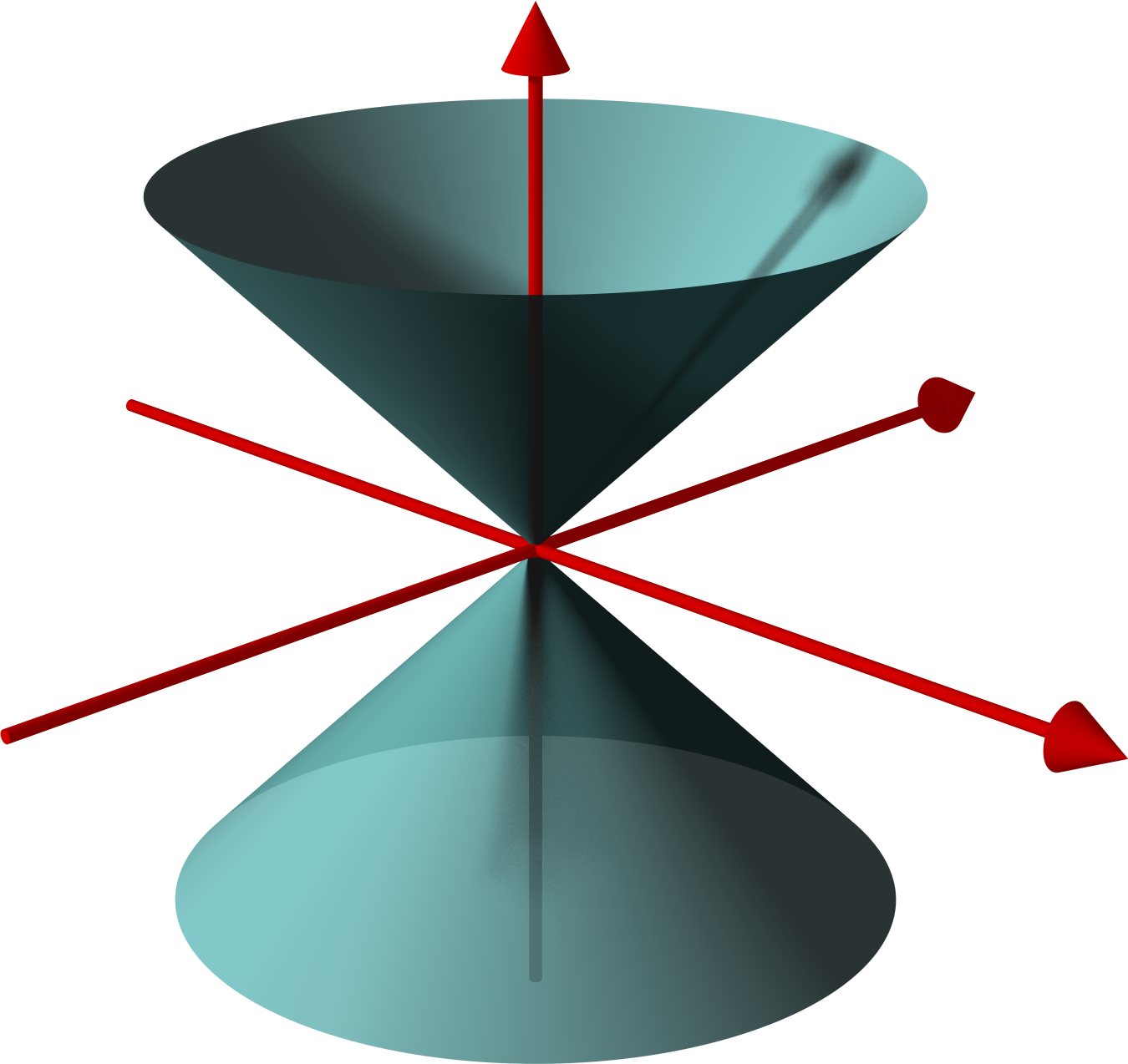Conic Sections and the Double-Napped Cone: Apollonius of Perga, Rene Descarte, History of Mathematics etc.
I always thought Co-Ordinate Geometry had something to do with the Conic Sections’ being defined based on the Double-Napped cone. I believed Rene Descarte was the one who made that decision.
I thought he did this to keep the definition symmetric about the origin of the [x, y, z] space. That is, I thought, a double-napped cone was conceived so as to give one cone the positive z-coordinates and the other one the negative z-coordinates for symmetrical considerations. Still not clear? Keep reading…

I was going through some historical documents related to the Conic Sections and their development when I came across a name that cleared everything for me:
Mr. Apollonius of Perga (262 BC – c. 190 BC)
He walked on this earth many centuries before Rene Descarte did. He did his Mathematics long before the invention of Co-Ordinate Geometry. Co-Ordinate Geometry basically helped in the Algebraic treatment of Geometry, which was never a concern or a possibility in the times of Mr. Apollonius. He did not use Algebra. He used words and figures. Still, he defined and described the properties of Conic Sections in such methodical and precise way that not much needed to be added ever after. He covered all scenarios. He clearly explained how Conic Sections could be defined with complete accuracy using an oblique cone too:

I was surprised beyond limits when I came to know that Mr. Apollonius was the one who defined Conic Sections based on double-napped cone. I thought hard and understood the need for such a definition. A deep look at the following figure will answer all questions:
The co-ordinate system is not explicitly shown in the above diagram. So, let me borrow it from the first diagram. This will keep things simple. Thus, the point where the apex of the two cones meet will be treated as the origin.
Ellipse
When a plane cuts the cone the way it does in the second image of the above diagram, it forms an ellipse. Simple.
Circle
A special case of ellipse where the plane that cuts the cone is parallel to the X-Y plane according the scheme chosen by me.
Hyperbola
The third image in the diagram is a hyperbola. As can be seen, the plane cutting the cone can be at any angle but never equal to the slant angle of the cone. This has a very important implication. The plane cuts both cones of the double-napped cone. The third double-napped cone of Figure 3 shows two hyperbolas. In one the cutting plane is at an angle to the axis of symmetry of the cone while the other plane runs parallel to it. In all the cases, the sections formed on both cones will be symmetrical. The image 3 of the Figure 3 may be misleading but we need to keep in mind that we are dealing with infinite geometrical structures. We, thus, need to extend the image in our minds and see the symmetry.
Parabola
I see this as a very special case of hyperbola when dealing with single cones, but with a double-napped cone this relation is ignored. The plane cutting the cone is at an angle equal to the slant angle of the cone. Thus, it runs parallel to the slant at a distance (if it runs on the slant, we get a line). This also means that the plane can cut only one cone. The other cone will see the plane running parallel to it.
Why is a double-napped cone needed?
I detailed a lot of stuff but never explained why we need a double napped cone if it is not for the satisfaction of co-ordinate system symmetry. Well, a double-napped cone is not needed for the definition of any conic section apart from the hyperbola. The hyperbola is the only section that will be formed on both cones if we have a double-napped cone, but can also be defined very well on the single cone. Also, co-ordinate geometry was not available to Apollonius and there was no pressure on him from Rene Descarte. It seems there is no pressing need for a double-napped cone and a single cone would have sufficed:
This is what A History of Mathematics by Carl Boyer and Uta Merzbach has to say about double-napped cone in Chapter 7 on Apollonius of Perga:

Thus, symmetry was obviously a consideration. Also, the concept of infinity was taken care of. Greeks would never have wanted to face the wrath the Gods by neglecting symmetry and infinity:)
Why do we need a cone for defining ellipse, circle, parabola and hyperbola?
Because we are dealing with conic sections and conic sections can only be defined on a cone. That is a dumb answer, I know.
Try Cylindrical Sections, instead. There are only two curves possible when a plane intersects a cylinder – a Circle and an Ellipse. Nothing else.
What about Spherical Sections. Oh no! Let us not go to that domain. Let us reserve that for some later advanced research. One thing that needs to be understood is that cone and cylinder have single curvature. Sphere is a different beast. It has double curvature. What this means is that a cone or a cylinder can easily be developed:
Development of various Solids from IIT Guwahati Learning Material
A sphere cannot be developed satisfactorily due to the double curvature. If a plane cuts a sphere, the only curve it can generate is a circle. The largest circle that can be formed is when a plane cuts the sphere in two equal halves:
I will go into the details of space curves (as opposed to plane curves that we have been dealing with in the whole article) cutting spheres and the shapes thus formed later. For now, I have to go deep into the conic sections and their practical applications, analytical geometry etcetera.
